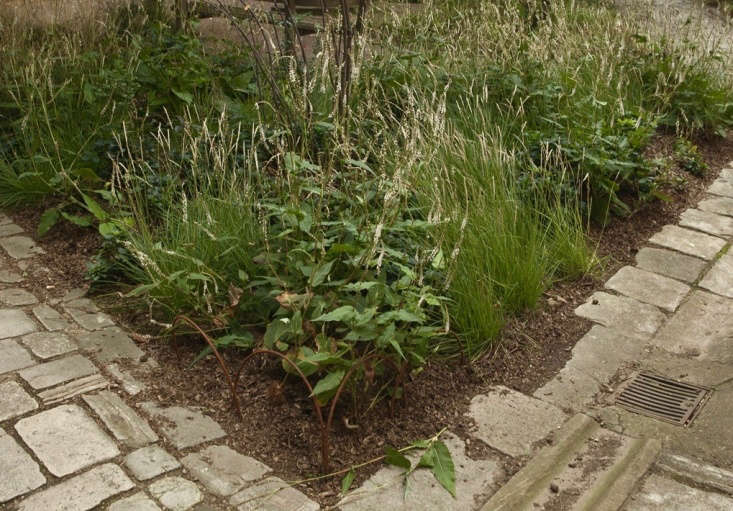Behind a wide, heavy wooden door on Fleet Street, a small courtyard with a collegiate atmosphere has been minding its own business for hundreds of years. Smartly dressed people come and go; on the curved benches they read or talk. Although the yard is enclosed by 17th- and 18th-century law chambers, the garden is planted as though it is on the edge of a forest. Welcome to Hare Court in central London: always open, if you can find it.
Photography by Jim Powell, for Gardenista.

A gated lane separates this woodland garden from the Round Church, built by the Knights Templar in the 12th century. Beyond lies the Great Garden, overseen in the 21st century by Andrea Brunsendorf. In the last few years she has been able to turn her creativity to this small area. It is named after the brothers Hare, who financed building work in exchange for geographical immortality and the use of chambers during their life time.
For more of Andrea’s activity in the Great Garden, see: Almost Private: A Secret River Garden in Central London.

When Andrea was given free rein over this space, she found a line of silver birches in a sea of gravel. She has softened this urban-designer look, adding darker birches with a looser habit. “I work with the framework,” she says.

The silver birches (Betulis jacquemontii) had been planted in honour of the Hare Brothers of Hare Court; unfortunately there were four of them, which makes a slightly awkward number for trees. They have been joined by multi-stemmed Betulis nigra.
“We integrated Betulis nigra with the Himalayan birch to create a woodland feeling,” says Andrea. “There are four different planting mixtures.” In the shaded part, shown here, there is Persicaria amplexicaulis ‘Alba’, white Japanese anemone for late in the year, yellow hybrid hellebore for early in the year and tufty Pennisetum alopecuroides. The Japanese forest grass Hakonechloa macra is planted under the newer birches.


Gravel has been left alone around the perimeter of the garden or rather, it has been shifted there specifically, having dominated the space. Because these building require some maintenance, scaffolding is never far away, and the space around the buildings has been left clear. “Otherwise we’d get attached to the plants and then they’d get ruined,” Andrea points out.

Classic woodland plants have been used under the silver birches: evergreen fern Polystichum ‘Herrenhausen’, Allium ‘Purple Sensation’ for more height as well as frothy cow parsley. Then follows Descampsia cespitosa ‘Goldtau’ with tall, pale Anemone ‘Honorine Jobert’, which can go on for some time.









Have a Question or Comment About This Post?
Join the conversation